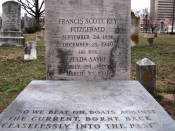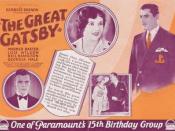Director Jack Clayton?s rendition of F. Scott Fitzgerald?s The Great Gatsby brings to life the jealousy in both men and women, a concept first observed in the 1925 novel. This popular novel has been hailed as a key symbol of the ?Roaring 20?s,? yet its themes transcend time in an expression of the human condition. The film's flaws, however, turn it into a glossy disappointment. With its luxurious period costumes, meticulously rich settings and props, and a cast who all look the part, this version of The Great Gatsby has all of the surface elements seductively in place. Francis Ford Coppola's screenplay also stuck closely to the novel, transforming some of Fitzgerald's most iconic observations about the classes into dialogue. Additional scenes between Jay Gatsby (Robert Redford) and his beloved Daisy (Mia Farrow) capitalize on the actor?s romantic allure. Clayton's sluggish pacing, however, makes the film a stilted literary artifact rather than an emotionally complex story.
Throughout the film, the audience is constantly reminded of the jealous nature of man. Each flash of green, each ominous green eye looking down upon them, and each action of the characters strengthen this reoccurring theme of jealousy.
When Nick Caraway (Sam Waterston) first appears on the screen in the opening sequence, we become aware of his jealousy of his cousin Daisy?s lifestyle. ?And my cousin Daisy Buchanan lived in one of the glittering white palaces of East Egg with her husband Tom, who?d I?d known in college,? confesses Nick when describing how he lives on the less fashionable side of Long Island. He is on his way to visit Daisy for lunch when the story truly begins. He wants the money they have, but knows he can never have it. At lunch, Nick reveals that he lives next to Jay Gatsby. In response...


